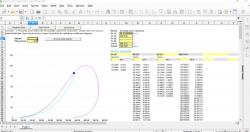Hi to all,
how to review the gas composition w.r.t phase envelope and cricondenbar? how these will affect natural gas separation(LTS separation) and hydrate formation.
Here i have attached phase envelope. PFA
gas composition
(Dry Basis)
Composition Mole Fraction
Methane 0.8649 3-Mpentane 0.0000
Ethane 0.0466 n-Hexane 0.0006
Propane 0.0467 Benzene 0.0000
i-Butane 0.0088 Cyclohexane 0.0000
n-Butane 0.0134 2-Mhexane 0.0000
22-Mpropane 0.0000 3-Mhexane 0.0000
i-Pentane 0.0031 n-Heptane 0.0005
n-Pentane 0.0029 CC8= 0.0000
Cyclopentane 0.0000 H2O 0.0000
22-Mbutane 0.0000 CO2 0.0120
23-Mbutane 0.0000 Nitrogen 0.0005
2-Mpentane 0.0000 EGlycol 0.0000
Edited by 274@P6, 19 March 2020 - 01:42 AM.

 FB
FB












